Mesh networking has been talked about for years, but it has only become a consumer reality in the last 12 months with the arrival of NETGEAR's Orbi and Linksys's Velop. The clear benefits of the format, however, now mean that the market is beginning to drown in options, with even vendors that are less well known for their routers entering the fray. Grand claims are being made about performance and house coverage, so we thought we would round up the biggest-name players and pit them against each other to see who was king of the airwaves.
This test will include all the main bundle options from NETGEAR and Linksys, up against the latest BT Smart Hub (which isn't a mesh networking product but BT is making bold claims about its coverage), BT's own Whole Home WiFi, which is a mesh networking product, and Google's WiFi, which can be purchased as a 2-pack mesh option as well as standalone.
This isn't an exhaustive group by any means, and we will also be testing other contenders over the coming weeks as they arrive. But our selection in this article includes the mainstream brands that are likely to be your first consideration, and the ones that will be selling in volume.
Before we get down to each of this month's contestants in more detail, we should explain what mesh networking actually is and why you might want it. As any user of a WiFi network will attest, the further you are from the router, the worse the signal gets, and if there are objects in the way then that makes the signal degrade even more rapidly.
Businesses with Ethernet wiring across their premises get round this by placing access points strategically all around their buildings that use the same SSID (wireless network name) and authentication. Client devices connect to the nearest access point and users get a (relatively) seamless experience if they move around a building.
But most people's houses don't have Ethernet plumbed in, and whilst you could use powerline networking to place access points around your home (we will be reviewing a device range from devolo that does this in a few weeks), there are other options. A wireless repeater is one of these, but this will sit on your existing WiFi and then send out another signal, often on a different SSID, that you use when out of range of the primary signal. This isn't an ideal solution, particularly if you have to switch SSIDs.
The answer is mesh networking. This is a system whereby each access point communicates with others wirelessly, and finds the fastest WiFi route back to the primary router via its WLAN siblings. The client SSID will be the same wherever the device is located, so the user won't know which node they are actually communicating directly with.
The manufacturers in this test take subtly different approaches to this idea. All use multi-band nodes (usually triband) that will use one wireless wavelength as a “backhaul” for communicating between nodes. But whereas NETGEAR's Orbi has a dedicated 5GHz 802.11ac radio for this, the Linksys Velop picks the best signal.
The Orbi also takes a “hub and spoke” approach, where individual nodes talk directly to the primary router, whereas the Velop nodes will go via the nearest neighbour, so in theory could be used to string out across a really large area with enough nodes. But whether this is the best approach for the average home user is questionable, as our previous testing has illustrated.
This month, we will be going into more depth with our testing, whilst using the same basic configuration (and the same house…) as before. We aim to provide the definitive answer to the question – which is the best option if you want great WiFi connectivity throughout a large flat or house, and even down the garden? But before we get to the performance competition, let's meet the competitors.
NETGEAR Orbi
When we first looked at the Orbi, there was just one version available, with two units in a box. One acted as your router, and the other was the satellite. This is the AC3000 version, with the product name RBK50, and claims to be able to cover 5,000 square feet (approximately 20m in each direction).
Since then, NETGEAR has released a cheaper AC2200 version (RBK40) with less powerful wireless radios and a ‘mere' 4,000 square feet of coverage. There's also a convenience-oriented spin on the latter where the satellite comes in the form of a single unit that plugs into your wall outlet, for places where you don't have space to put an access point and a power brick. This is the RBK30 version, and it has a 3,500 square foot coverage.
RBK50
The RBK50 system includes two nearly-identical units, plus two power adapters and a single Ethernet cable.
The RBK50 units are relatively large and their white finish is reasonably aesthetic. From the front there's little to distinguish them, apart from a removable clear plastic band that includes setup details. However, the router has a blue top and the satellite white, so you know easily which is which.
Both units sport four Gigabit Ethernet ports. The router has one coloured yellow, because this is the one that is meant to be connected to the ADSL or cable modem. This means it only has three ports free for wired networking devices.
The satellite has all four Gigabit Ethernet ports free, so not only does it extend the range of WiFi, but gives you an extension of the wired network as well, for devices that don't have WiFi built in. Both devices also sport a USB 2.0 port, which is a bit measly in these days of USB 3.1, and is disabled anyway, included only for future firmware updates.
Each RBK50 unit is tri-band, with two 5GHz 802.11ac radios, one at 1,733Mbits/sec and one at 866Mbits/sec, plus a 2.4GHz radio rated at 400Mbits/sec. The top 802.11ac uses 4×4 antennas and operates as a dedicated 1,733Mbits/sec “backhaul” from router to satellite.
Price: £349.99
Specification:
Wireless protocols: MU-MIMO with 802.11b/g/n 2.4GHz and 802.11a/n/ac 5GHz plus 256 QAM on both
Performance: AC3000 (1,733 + 866 + 400 Mbits/sec)
Antenna Configuration: 6×6 Internal Antennas
Ports: Router: 3 x Gigabit Ethernet, 1 x Gigabit Ethernet WAN, USB 2.0 (not used with current firmware); Satellite: 4 x Gigabit Ethernet, USB 2.0 (not used with current firmware)
Modem Support: VDSL/ADSL 2+ or cable
RBK40
The RBK40 system looks quite similar to the RBK50, except that the units taper more at the top. You get these two, their power supplies, and an Ethernet cable in the box.
Like the RBK50 units, the RBK40 router is distinguished from the satellite mainly by haivng a blue top where the satellite's is white.
Also like the RBK50, the RBK40 router has a yellow Gigabit Ethernet port dedicated for the broadband connection, plus three further Gigabit Ethernet ports. The satellite just has four Gigabit Ethernet ports. There's no USB 2.0 port on either.
The RBK40 unit is still tri-band, like the RBK50, with two 5GHz 802.11ac radios and one 2.4GHz one. But both 802.11ac signals run at 866Mbits/sec, so only 2×2 antennas are used for the decicated “backhaul”, with the 2.4GHz remaining at 400Mbits/sec. This is the reason for the AC2200 rating, where the RBK50 is AC3000. But the RBK40 is also £80 cheaper.
Price: £269.99
Specification:
Wireless protocols: MU-MIMO with 802.11b/g/n 2.4GHz and 802.11a/n/ac 5GHz plus 256 QAM on both
Performance: AC2200 (866 + 866 + 400 Mbits/sec)
Antenna Configuration: 4×4 Internal Antennas
Ports: Router: 3 x Gigabit Ethernet, 1 x Gigabit Ethernet WAN; Satellite: 4 x Gigabit Ethernet
Modem Support: VDSL/ADSL 2+ or cable
RBK30
The RBK30 system actually uses the same router as RBK40, but the satellite is completely different. It's aimed at plugging straight into your wall plug, for spaces where you don't have somewhere to place the freestanding satellite. So the box only contains one power supply and Ethernet cable alongside the devices themselves.
The router uses the same blue top to distinguish it, although in this case you're not going to get it mixed up with the satellite. The latter is much smaller and, obviously, has its power adapter built in so it plugs straight into the AC socket.
Since the router is the same as with the RBK40 kit, this has a yellow Gigabit Ethernet port dedicated to the broadband connection, plus three further Gigabit Ethernet ports, and no USB. The satellite doesn't have any wired Ethernet ports at all.
Where wireless configuration is concerned, the RBK30 is identical to the RBK40. It's tri-band, with two 5GHz 802.11ac radios, both running at 866Mbits/sec, and again only 2×2 antennas are used for the decicated “backhaul”, with the 2.4GHz remaining at 400Mbits/sec. So it's also rated at AC2200, but is £20 cheaper still than the RBK40.
Price: £249.99
Specification:
Wireless protocols: MU-MIMO with 802.11b/g/n 2.4GHz and 802.11a/n/ac 5GHz plus 256 QAM on both
Performance: AC2200 (866 + 866 + 400 Mbits/sec)
Antenna Configuration: 4×4 Internal Antennas
Ports: Router: 3 x Gigabit Ethernet, 1 x Gigabit Ethernet WAN; Satellite: none
Modem Support: VDSL/ADSL 2+ or cable
BT Smart Hub
The BT Home Hub in its various forms can be found in millions of houses across the UK, so we thought we should include the latest iteration in our testing as a reference. The most recent version, which is the sixth incarnation, is considered so special by BT that it has changed its name to Smart Hub.
It doesn't use mesh networking, like the other contenders in this review, so isn't quite a direct comparison. But BT claims it can cover an entire house like none of its competitors, so we really had to put that to the test.
The BT Smart Hub's box is decidely skinny, because so is the router inside. In fact, it's designed to fit through a letter box so you don't have to be in when it's delivered in the mail. Apart from the device itself and its external power supply, plus some documentation, there's nothing else included. So you will need to add your own Ethernet cable to hook up any wired LAN devices.
The router is designed to sit upright, and two feet pop out on springs as soon as you take it out of the box. But this is still a relatively unobtrusive router.
Since the BT Smart Hub is meant to work with BT Broadband only, it has an ADSL modem built in, which means it connects directly to your phone line via RJ-11 rather than having any kind of modem in between. It therefore won't work with cable broadband. Otherwise, it has four Gigabit Ethernet ports and a USB 3.0 connection.
This is a dual-band router, so it offers 5GHz and 2.4GHz radios. BT doesn't state the throughput rating, but you get 3×3 antennas for 2.4GHz signals and 4×4 antennas for 5GHz, so BT quotes the Smart Hub as having seven antennas in total. It was initially released at just £50 for existing customers, which was potentially a bit of a bargain, and even at more recent higher prices it has good value credentials. But the question is how it can compare with the mesh networking products on test here.
Price: £129.99 from BT (but much cheaper elsewhere)
Specification:
Wireless protocols: MU-MIMO with 802.11b/g/n 2.4GHz and 802.11a/n/ac 5GHz
Performance: Not stated
Antenna Configuration: 4×4 plus 3×3 Internal Antennas
Ports: 4 x Gigabit Ethernet, USB 3.0, RJ-11
Modem Support: VDSL/ADSL 2+ built in
BT Whole Home Wi-Fi
BT's second bite of the cherry in this test is a mesh networking product, unlike the Smart Hub. BT Whole Home Wi-Fi promises “Wi-Fi in every room or your money back”, which is the kind of claim we would very much like to verify.
Unlike the Smart Hub, the BT Whole Home Wi-Fi box will not be slipping in through the letter box whilst you're out. It's huge. It's also pretty sturdy, so you might want to use it as storage once the system is set up. Inside can be found three disc-shaped access points, their respective power supplies, and a ribbon Ethernet cable.
You would be forgiven for thinking that a small alien invasion was occurring when viewing the trio of BT Whole Home Wi-Fi access points together. They look like they should be sitting on their wider sides, but in fact they are meant to sit upright as shown here.
All three access points are exactly the same, with the power connection and a single Ethernet port on the rear side not meant to be seen. The obvious omission is an ADSL modem, so you will either need to have a separate Ethernet-connected modem or use this kit in conjunction with your existing BT Home Hub or Smart Hub. The two satellites not connected to the broadband directly can be used to bridge onto a wired network or connect a wired PC.
Each of the devices only offers dual-band wireless, but the specification is high. The overall rating is AC2600, which is comprised of a 5GHz 802.11ac signal operating at 1,733Mbits/sec plus a 2.4GHz 802.11n signal offering 800Mbits/sec. BT doesn't make it clear how the backhaul is derived from this, but you will almost certainly have client devices on the same radio as the backhaul, which could affect performance. However, whilst the BT Whole Home Wi-Fi was a similar price to the competition at £299 when it was launched, it can now be purchased for £189.99, which is a bit of a bargain for a three-unit setup – assuming it delivers.
Price: £189.99
Specification:
Wireless protocols: MU-MIMO with 802.11b/g/n 2.4GHz and 802.11a/n/ac 5GHz
Performance: AC2600 (1,733 + 800 Mbits/sec)
Antenna Configuration: 4×4 Internal Antennas
Ports: Gigabit Ethernet
Modem Support: VDSL/ADSL 2+ or cable via Ethernet (router required)
Google WiFi
Now that Google is combating the Amazon Echo with its own voice-controlled assistant Google Home, it makes sense that Google is also hoping to provide the WiFi in your house too. This, rather unsurprisingly, is called Google Wi-Fi.
You can buy two versions of Google WiFi at the moment – a single access point, or two-pack. The former is obviously not a mesh networking setup, but the second is. We looked at both for comparison.
Whether you opt for the single or dual package, you still only get one 1.8m Ethernet cable in the box. Otherwise, you get one or two of the little round units and a power brick for each. The power brick is very clever in design, using a slide-out earth pin so it is very flat when not in use. It also uses a USB C interface, so in theory any USB C power could be provided instead.
The Google WiFi units are quite cute and small. They are well designed to be inobtrusive around your house, with just a mild blue glow from the gap in the middle when they're turned on.
Each unit has two Gigabit Ethernet ports. One unit will need to be connected to the broadband via an Ethernet port, but the other can act as a bridge to a couple of wired client devices. There's no USB for connecting external storage.
Like the BT Whole Home Wi-Fi, each Google WiFi unit is merely dual band, with a 2×2 Wave 2 antenna setup and both 5GHz and 2.4GHz radios. However, the units are only rated at AC1200, made up of 866Mbits/sec of 802.11ac and 400Mbits/sec 802.11n. With the limited antenna configuration the performance is likely to be behind some of the other contenders in this article
Price: 1-pack – £129; 2-pack – £229
Specification:
Wireless protocols: MU-MIMO with 802.11b/g/n 2.4GHz and 802.11a/n/ac 5GHz
Performance: AC1200 (866 + 400 Mbits/sec)
Antenna Configuration: 2×2 Internal Antennas
Ports: 2 x Gigabit Ethernet
Modem Support: VDSL/ADSL 2+ or cable
Linksys Velop
The Linksys Velop was originally sent to us in 3-Pack form, but the 2-Pack is the much better deal, and you can also buy a single device. So we will be testing all three configurations.
This is the box for the three-pack. It's a hefty piece of packaging.
Whichever version you buy, you will get just one Ethernet cable plus the necessary power plugs for the number of units purchased. They're nicely styled, intended to look a bit like speakers so they aren't too obtrusive round the house.
To this end, the branding and styling is minimal, with a small light on the top to indicate status.
Each Velop unit is identical, so it doesn't matter which one you use to connect to your broadband (unlike NETGEAR's Orbi). There are two Ethernet ports on each, so the main broadband-attached unit can support one wired client whilst the satellites can support two, or connect to a switch to act as a bridge. There's no USB connectivity.
Each unit is tri-band, with two 5GHz radios and one 2.4GHz one, providing a AC2200 rating. This is made up of two 867Mbits/sec 802.11ac signals and one 400Mbits/sec 802.11n signal. Allegedly, any of these can be used as the backhaul, depending on which is the fastest connection between units. But in practice it's probably going to be one of the 802.11ac signals.
Price: 3-Pack – £499.99; 2-Pack – £249.99; 1-Pack – £180
Specification:
Wireless protocols: MU-MIMO with 802.11b/g/n 2.4GHz and 802.11a/n/ac 5GHz
Performance: AC2200 (867 + 867 + 400 Mbits/sec)
Antenna Configuration: 2×2 Internal Antennas
Ports: Per unit: 2 x Gigabit Ethernet
Modem Support: VDSL/ADSL 2+ or cable
Setup Comparison
Going through every single software detail for each of the router systems on test in this article would not make for particularly interesting reading, and our focus is on performance. So we're just going to concentrate on the initial setup, with just a cursory mention of whether the system has comprehensive router functions or is more of an add-on to an existing router.
NETGEAR Orbi
In the case of all three options, the NETGEAR Orbi router and satellite come pre-paired, so you don’t need to set this up yourself, although the configuration wizard will take you through a process of ensuring they are talking to each other. It will only be necessary to follow a more involved process if you add another satellite in the future. You can almost plug the starter kit in and get started straight away.
There are Basic and Advanced options in the Web-based management interface, and a comprehensive set of controls over the various routing and firewall features. There's a smartphone app, too, although this doesn't have all the options of the Web interface. All three Orbi packages could entirely replace your existing router, and with four Ethernet ports on the main unit, it can act as the hub of a small wired network too.
BT Smart Hub
You don't really need to do anything to the Smart Hub to set it up – just plug it into your broadband and wired devices. A wizard will confirm Internet connectivity, but then you're ready to go. It will also work just fine without Internet connectivity.
There's a much more attractive menu presented by the admin interface than some previous BT Home Hubs, and as this is a fully fledged router, there are advanced options for firewall, access control, and so on. The Smart Hub could replace your existing router because that's what it's meant to do.
BT Whole Home Wi-Fi
The BT Whole Home Wi-Fi uses a smartphone app to set up the mesh. Annoyingly, it seems as if the first unit MUST be connected to working broadband for the configuration process to work at all. However, once you have set up the initial unit, the app will then let you test locations for WiFi signal so that you can place each one optimally, which is a useful feature. Our test configuration was considered “good” if not the best possible.
As you can see from the diagrams above, the system will check for updates and update all attached units. It also creates a daisy-chain of units, so each new one connects to the unit with the best signal in the mesh. In theory, you could keep adding units to create a really huge coverage area. However, what you don't get is much in the way of router management options. The BT Whole Home Wi-Fi is meant to add onto your existing BT Home Hub or Smart Hub, which will be providing things like access control and firewall protection.
Google WiFi
Unlike the BT Whole Home Wi-Fi, the Google WiFi system does present a Web page if you point a browser at its IP address – but all this does is insist you get the smartphone app. The app follows a similar system to BT's asking you to add the primary unit, then attach the secondary unit to the mesh. You also must have a working Internet connection to do this.
Once the system is set up, the software will be updated, which takes 5-10 minutes. There are more features to the admin interface than BT Whole Home Wi-Fi, however, so you could use Google WiFi as your only router, although you can also plug the primary unit's broadband Ethernet port to an existing router and just use the Google mesh as an add-on.
A key feature that might tempt you to the Google solution over others is the Home control option. This allows you to detect and integrate things like Google Home light control, Nest, Chromecast and a huge range of third-party products into one control interface, although you can of course control these using other means with other WiFi options.
Linksys Velop
The Velop is yet another mesh designed exclusively to be set up via smartphone. The wizard process is exhaustive and takes you through every step of the process in great detail, so that even very non-technical people could successfully configure the system. You set up the first node, then add the second (and third) node so that each is part of the same network. All nodes are physically identical, unlike with NETGEAR's Orbi, so it doesn't matter which one is used to connect to your broadband.
Despite the Velop using a smartphone app, if you delve into the menu (accessible via the three-line “burger” icon in the top-left-hand corner), more advanced settings are available, including administrating your Velop nodes, and detailed WiFi control such as port forwarding and Wi-Fi MAC address filtering. The features aren't as extensive as the best standalone routers, or the NETGEAR Orbi, but the app design is attractive and straightforward. You could replace your router with the Velop, apart from the limited number of Ethernet ports.
How We Tested
We tested all the router configurations – ten in total – exhaustively from eight different positions with three different WiFi clients. The clients used were a new Apple MacBook Pro, which sports 3×3 802.11ac WiFi, an Acer Windows 7 notebook with 2×2 802.11ac WiFi, and an older HP Folio 13 which maxes out at 3×3 802.11n WiFi.
In each case, we used the freely available iPerf 3.1.3 software, which stresses a network by sending packets of random data and measures the throughput. One system acts as a server, and the other as a client, as data is sent between them. In all cases, we used a self-built Windows 10 workstation connected to the routers via Gigabit Ethernet as the server, so that the WiFi was always the slowest connection.
These are the iPerf commands we used:
For the server: iperf3 –s –i 1
For the client: iperf3 –c <IP Address> –P 4 –i 1 –t 60
Note that the client command sends four streams of data simultaneously, simulating a multi-client connection as closely as possible with just one client. It takes 60 throughput readings at one second intervals and then averages the result.
The above diagram shows the layout of the house we used for testing. Note that we didn't test on the top floor of the house because this was directly above the first floor and wouldn't have provided much of a range test. Instead, we used two locations on the same floor as the router (the first floor), then more distant locations on the ground floor extending out the back of the house into the garden.
Each test location, numbered in the diagram above, was approximately 5m away from the last one.
Location 1 was very near to the router, around 1m away. The next location – 2 – was around 5m away, with a wall in the way, but on the same floor. Location 3 was on the floor below, so had walls and a floor in between, but was a further 5m away. Location 4 was the last one actually inside the house. Locations 5 to 7 were then 5m further down the garden. Location 8 was ony 2m further down, as this was the end of the garden, but also behind a shed, so posed a significant challenge that only a few mesh WiFi systems could cope with.
We should also say a few words about the location of the satellites. The routers were always placed in the same location, in the first floor study next to the broadband. In the case of three-unit mesh systems such as BT Whole Home Wi-Fi and the top Velop option, the second and third satellites were placed at S1 and S2.
With the two-unit Velop and Google WiFi, the second unit was placed at S1, due to the recommendation of the setup software. However, in the case of the three Orbi packs, it was possible to place the second unit at S2, due to the signal strength from these systems.
802.11ac Results – 3×3 Apple MacBook Pro
The Apple MacBook Pro's 3×3 antenna configuration should give it the best possible performance with 5GHz 802.11ac, so we're starting with the results using this client as the best-case scenario. With 802.11ac, you get a theoretical 400Mbits/sec per antenna, so the MacBook Pro is rated at 1,200Mbits/sec, although in practice you won't achieve anywhere near this, as our results show.
There's a clear winner at 1m – the original Orbi RBK50. But a surprising second is the BT Smart Hub, although it's quite a bit behind. The other Orbis do quite well, as does the single Google WiFi unit, and the single Linksys Velop. The three-unit Velop fares worst. But in reality all these results are quick enough for multiple users in close proximity.
Moving out to 5m, the RBK50 drops noticeably, but it's still in the same ballpark as the other contenders. The winner at this range is BT's Smart Hub, although one or two Linksys Velop units run it close. Notably last at this distance is Google WiFi with two units.
At 10m we're starting to see some notable separation. The client here is on the lower floor, in the kitchen. NETGEAR's Orbi RBK50 comes out top here again, by some margin, and Linksys's Velop with three units is now a credible second. The extra range of these systems is beginning to win out. The NETGEAR Orbi RBK40 and RBK30 are doing reasonably well, but so are the Linksys Velop with one and two units, and Google WiFi with two units is holding up too. The BT Whole Home and Google WiFi single-unit option are the losers. The big revelation here is that BT's Smart Hub came third behind the NETGEAR Orbi RBK50 and Linksys Velop with three units. The performance is still great at 10m, showing the strength of the radios in the BT Smart Hub.
The 15m distance is where the difference between mesh WiFi and single units really begins to show. In previous testing, many single routers will not reach this far, and a previous BT Home Hub 3 we had been using could not provide a reliable signal at this distance. NETGEAR's Orbi RBK50, on the other hand, is still providing 365Mbits/sec, which is going to be enough for multiple clients streaming HD video, or even 4K if the broadband is up to it. NETGEAR's other Orbi products are also doing well at this range, particularly RBK40. The Linksys Velop with three units is providing a commendable performance too, but the single Velop or Google WiFi units are completely failing. Even the BT Smart Hub is struggling, although 22.1Mbits/sec is still usable for browsing and video consumption. BT's Whole Home Wi-Fi is starting to show the capability of it's three-unit relay, whilst Google WiFi and the Velop with two units are providing decent if not outstanding performance.
At 20m the NETGEAR Orbi RBK50 is still king, and the other Orbis are also head-and-shoulders ahead of all else. BT's Smart Hub is STILL providing a usable signal, however, which is amazing for a keenly priced router. BT's Whole Home Wi-Fi and Google WiFi with two units are holding their own, but the Linksys Velop with one unit has dropped off completely, whilst the two- and three-unit options are only marginally better than the BT Smart Hub.
The 25m distance really shows where a mesh can provide range benefit. The NETGEAR RBK50 and RBK40 are way ahead again, but RBK30 has dropped off considerably. Amazingly, the BT Smart Hub isn't much weaker than it was at 20m – another incredible result. However, the BT Whole Home Wi-Fi is still going strong, as is Linksys Velop with three units. Google WiFi with two units is usable, but only marginally better than the BT Smart Hub. The single Google WiFi unit and Velop with one or two units are now out of range.
At 30m, strangely, the NETGEAR Orbi RBK40 really nailed the test, and the RBK50 was noticeably behind, with even the RBK30 beating it. We retested this and achieved similar results. The BT Whole Home Wi-Fi and Linksys Velop with three units were also ahead, and the BT Smart Hub had finally dropped off completely. The Google WiFi with two units was still receiving a signal, although not a very reliable or usable one. Everything else was now out of range.
With the 32m range, the client is also behind the garden shed, so although the distance isn't much greater, the obstruction adds difficulty. The NETGEAR Orbi RBK50 and RBK40, plus BT's Whole Home Wi-Fi, are the only systems able to reach this distance usably. Even the Orbi RBK30 is struggling, and everything else failed.
So, overall, with the Apple Mac Pro, NETGEAR's Orbi RBK50 and RBK40 win the range test, whilst BT's Whole Home Wi-Fi provides similar (but much slower) coverage, and the Linksys Velop with three units fares commendably well too. The biggest revelation is just how far the BT Smart Hub can reach.
So next let's see if the 3×3 results are replicated with a less powerful 2×2 802.11ac client.
802.11ac Results – 2×2 Windows Notebook
The Acer Windows notebook only has 2×2 802.11ac WiFi, providing a theoretical maximum of 800Mbits/sec, but again we're not getting close to that performance.
As before, at 1m all the routers are doing well, with every single one providing more than 300Mbits/sec. The BT Smart Hub is trouncing the competition, but the Linksys Velop is doing very well, as is the NETGEAR RBK30, which is strange because the router for the latter is the same as the RBK40 that came last at this range. The difference between Google WiFi with one unit and with two is also surprising. But all of the devices will provide great multi-client peformance at close range.
There is already noticeable drop-off at 5m, and here Google WiFi with a single unit has leapt from second last to the lead. The BT Smart Hub is still doing amazingly well, as are the NETGEAR Orbis. Google WiFi with two units is now last, and the BT Whole Home WiFi isn't doing that well either. The Linksys Velop with three units is only marginally better, and noticeably behind one- or two-Velop configurations, which is a phenomenon we noticed before. The three-unit systems appear to sacrifice middle distance performance for range, compared to two units.
This phenomenon is further illustrated at 10m, where the NETGEAR Orbi RBK50 is the clear winner, and its RBK40 and RBK30 siblings are comfortably ahead of the rest in second and third. Google's WiFi with two units is doing reasonably, but the BT Smart Hub has dropped off so that it sits alongside the rest of this month's contenders around the 40/50/60Mbits/sec mark.
As before, 15m is where mesh begins to show its abilities. The single Linksys Velop has fallen away and the single Google WiFi isn't faring much better, although it's still usable. The NETGEAR Orbi RBK50 is way out ahead again, and its siblings are very solid second and third. The Google WiFi with two units is still fourth, but the two- and three-unit Linksys Velop configurations aren't far behind. The BT Whole Home Wi-Fi is hovering around the same performance, but BT's Smart Hub has fallen to a merely usable speed.
The 20m result isn't hugely different to 15m, except that the NETGEAR Orbi RBK40 has taken the lead, with its siblings again strongly in second and third. The two-unit Velop has begun to fall away, so that it is scarcely an improvement over the BT Smart Hub, which is still holding its own. However, BT's Whole Home Wi-Fi is now ahead of its single-router alternative, neck-and-neck with the two-unit Google WiFi. The three-unit Linksys Velop is now in fourth place behind Orbi.
The main difference between 25m and 20m is that the two-unit Velop has fallen out of range alongside its single-unit sibling and the single Google WiFi unit. The NETGEAR Orbis are still romping ahead, but with the strange result that the on-paper quicker RBK50 is now behind its cheaper siblings. The three-unit Velop and BT Whole Home Wi-Fi are showing their value in fourth and fifth respectively. But two-unit Google WiFi is hanging on well, and so is the BT Smart Hub – another stellar performance for non-mesh WiFi.
At 30m, as before with 3×3 802.11ac, the BT Smart Hub has finally been vanquished. The NETGEAR Orbi RBK40 is still in the lead with its siblings in second and third. The Linksys Velop with three units is fourth again, run closely by the BT Whole Home Wi-Fi, but Google WiFi with two units is commendably still providing a usable signal too.
The 32m result is virtually the same as with 3×3. Only the NETGEAR Orbi RBK50 provides a really decent signal, but RBK40 and the BT Whole Home Wi-Fi are usable, the Orbi RBK30 is unreliable, and everything else is out of range.
Overall, the 802.11ac 2×2 results broadly mirror the 3×3 ones, with NETGEAR's Orbi RB50 and RBK40 winning on range and performance, but BT's Whole Home Wi-Fi providing similar coverage at a slower rate, and the Linksys Velop with three units doing almost as well, just falling down at the last 32m shed-related hurdle.
But what if you have an older device that only supports 802.11n? Our final suite of tests now turn to this WiFi protocol.
802.11n Results
Whilst 802.11ac only runs at 5GHz, you can get 802.11n over both 5GHz and 2.4GHz. However, most devices will use the 2.4GHz frequency, which is similar to that used by devices like microwave ovens, so interference is more possible. However, the 2.4GHz waveband also goes through solid objects better than 5GHz, due to its longer wavelength. You can have up to four antennas, with 100Mbits/sec per antenna, but most devices don't offer this. Our HP Folio 13 has three, so provides a theoretical maximum of 300Mbits/sec, which as with 802.11ac you will never get close to in reality.
At 1m, the clear winner is the NETGEAR Orbi RBK50, with the RBK40 second. Most other contenders are in the 50-70Mbits/sec mark, although the single Velop unit lags a little behind.
There's not a huge drop-off at 5m in most cases, although strangely the RBK40 has taken the top spot from the RBK50, and the BT Smart Hub is better at this range too. The two-unit Google WiFi is last, and Orbi RBK30 second-last, although the single Google WiFi unit is doing well. Overall, there's nothing clear we can say yet at this range.
The 10m range is also not that conclusive. The strange Orbi performance continues, with the RBK30 now the clear leader, offering the fastest 802.11n result in the whole test, with RBK40 second and RBK50 actually fourth behind the BT Whole Home Wi-Fi. Linksys Velop with two units is in third, and with a single unit in fifth place, but the three-unit setup languishes second from bottom, again confirming that the Velop with three units is not great for middle-distance performance. The BT Smart Hub is doing reasonably well, but Google WiFi with one unit is way ahead of two units, which is strange behaviour indeed, particularly as the latter is a clear last in this test.
Yet again, the 15m test shows where most single routers drop off – except the BT Smart Hub, which is still credible, albeit not up with the mesh options. The NETGEAR Orbis are way out ahead in the lead, and the RBK50 is again not far behind the RBK30 and RBK40. The BT Whole Home Wi-Fi is still providing very good 802.11n, as is the two-unit Linksys Velop. The three-unit Velop and two-unit Google WiFi are some way behind, but still doing well.
The NETGEAR Orbi RBK50 takes over again at 20m, with the RBK40 and RBK30 in second and third, still way ahead of all else. The BT Whole Home Wi-Fi is maintaining its fourth place, and Google WiFi with two units is keeping its end up well. The Velop with two units is still marginally ahead of three units, but the gap is much closer.
The 25m results have a few surprises. The NETGEAR RBK30 has dropped out completely, after a decent score at 20m. The RBK40 is back in the lead, but RBK50 is still doing well. The BT Whole Home Wi-Fi is holding up well, as are the two-unit Google WiFi and and three-unit Velop. The latter finally overtakes its two-unit configuration at this range. Amazingly, the BT Smart Hub is just about holding on at this distance too.
At 30m is where the BT Smart Hub finally begins to give up, with a non-usable performance score. The NETGEAR Orbi RBK40 is reigning supreme and the BT Whole Home Wi-Fi maintains a healthy second, with three-unit Velop in third but its two-unit sibling no-longer in range. Unusually, RBK50 came last in this test but it's still just about usable.
The four units that were still in contention at 30m remain at 32m, although the Orbi RBK50 regains its second place, with the RBK40 first. Unlike with 802.11ac, the Linksys Velop three-unit configuration managed to penetrate the shed in 802.11n mode, and achieved third place, but the BT Whole Home Wi-Fi wasn't that far behind, although both performance levels would only be enough for Web browsing and email, probably not watching video smoothly.
The results with 802.11n aren't as clear as with 802.11ac, and this is likely because in a dense residential neighbourhood there will be a lot of interference at 2.4GHz. So some results may have been affected by the band the router had chosen being reduced in performance by competition from nearby WiFi signals. Nevertheless, the overall story isn't that different from before. The NETGEAR Orbi RBK40 and RBK50 are the range and performance winners overall, although the other way round to before, with the BT Whole Home Wi-Fi acquitting itself well, albeit much slower. The one difference is that the Linksys Velop with three units is almost as good as the BT Whole Home Wi-Fi at reaching parts other wireless networks cannot reach. You're better off with two Velops at shorter distances, but three units reach much further beyond 20m.
The Raw Results… 802.11 AC 3×3
The Raw Results… 802.11 AC 2×2
The Raw Results… 802.11 N
This has been a long and fiddly test to complete, and the focus on performance means that you may want to temper our assessment if there is a feature you need from one of this article's contenders that isn't quite as quick as the others. For example, if you use Google's home automation products, the Google WiFi option might be preferable as it's designed to work with these and has support in its configuration app.
But in pure performance terms, there are some clear winners from our tests. So here are our conclusions on each of the systems we have assessed.
It's very clear that if you want high performance and maximum range at the same time, the NETGEAR Orbi is the clear winner. It blows away the competition, including Google WiFi, at most ranges with most protocols. The RBK50 is usually the fastest in 802.11ac, as you might expect, although the RBK40 seems to have the lead with 802.11n. Considering the £80 price difference, the RBK40 is the best balance of performance and value. The RBK30 is almost as good, but the £20 saving means it's only worth considering if you really need the convenience of the all-in-one satellite to suit your house configuration, because it is generally behind RBK40 and RBK50 in performance. Overall, the NETGEAR Orbi provides the widest coverage and most consistent performance of any mesh WiFi option on the market.
The BT Smart Hub is a real revelation, at least in performance terms. BT claims wide coverage for this router, and our tests confirm that it fulfils this marketing expectation, keeping up with mesh options surprisingly well in terms of range, if not in performance at that range. In the past, BT was offering the Smart Hub to its customers for £50, and you can still buy it for £60-70 from some vendors, making it an absolute bargain. However, it can only be used with BT broadband, and if you read the reviews on Amazon, there is a significant problem with reliability. When it works, it's great, but be sure you can replace it on warranty if it breaks.
The BT Whole Home Wi-Fi also has plenty to commend it. It's not very fast at any distance, but is the only mesh that can keep up with NETGEAR's Orbi in terms of range. It's also great value at under £200. However, this is not a system that could replace your existing router, more of a complementary add-on – perhaps connected to a Smart Hub. The necessity of an Internet connection for it to work at all is a massive annoyance, and the single Ethernet port on each unit will make it less useful as a bridge. The lack of router software features also cements its add-on status. If you've got a decent existing router, it could be worth considering if you just want WiFi down the garden.
The Google WiFi options are a bit of a contrast, despite just being one or two of the same piece of hardware. We would really avoid the one-pack, as it really isn't that poweful as standalone routers go, and lacks features, with just one Ethernet port other than the one intended for broadband. The two-unit bundle has a lot more going for it, as the mesh works well at extending range. Like the BT Whole Home Wi-Fi, it's not very fast overall, although it can reach almost as decent a distance. But it's also a bit more expensive than the Whole Home Wi-Fi, so if you do want just an add-on, the BT option is better value. The only other thing that might sway your choice is the support for Google peripherals in the app we mentioned before.
In this company, the Linksys Velop fares a little better than it did when we looked at it on its own, with just the previous NETGEAR Orbi review as comparison. The single unit, like a single Google WiFi, is a relatively puny router without enough features to be worth considering on its own. On the other hand, as we concluded before, if your range needs are middling, the two-unit option is not a bad one, and if you need wide area coverage, the three-unit version does very well. However, in a straight choice we'd still opt for the NETGEAR Orbi RBK50 or RBK40. The two-pack Velop is quite good value, but the Orbi alternatives give you much faster performance, and in the case of the RBK40 for only £20 more.
Discuss on our Facebook page, over HERE.
Kitguru Says: The NETGEAR Orbi remains the king of mesh WiFi, although there are some other decent options out there that are worth considering depending on your needs.
 KitGuru KitGuru.net – Tech News | Hardware News | Hardware Reviews | IOS | Mobile | Gaming | Graphics Cards
KitGuru KitGuru.net – Tech News | Hardware News | Hardware Reviews | IOS | Mobile | Gaming | Graphics Cards


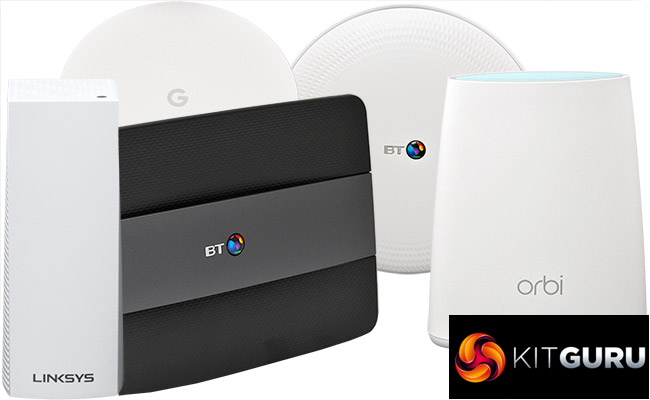





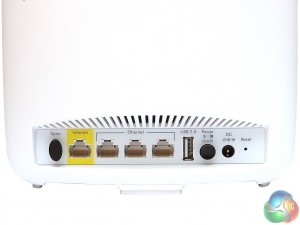

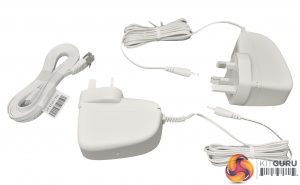

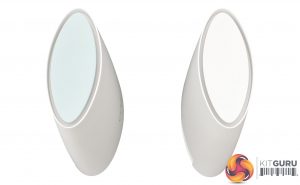
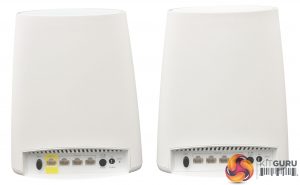


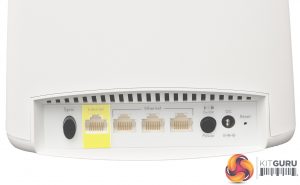
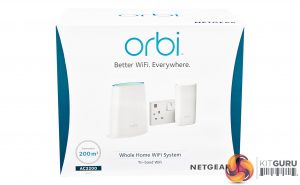
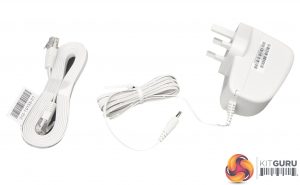
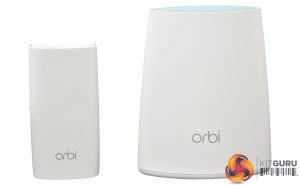



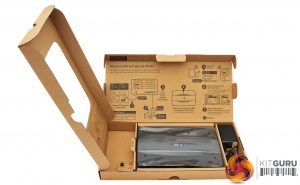

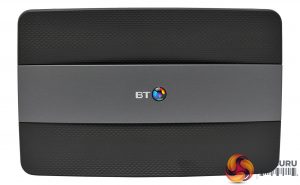
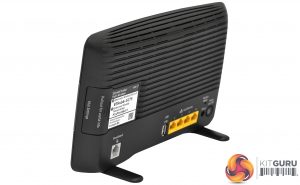

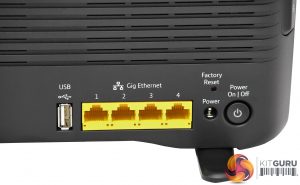
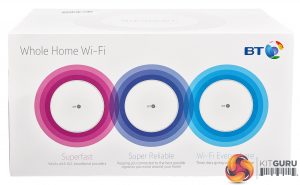
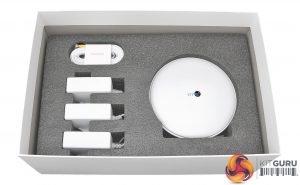


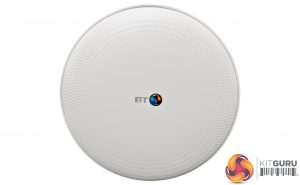

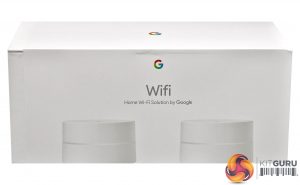
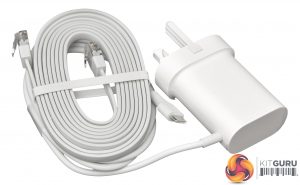


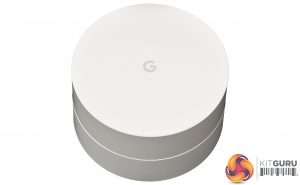
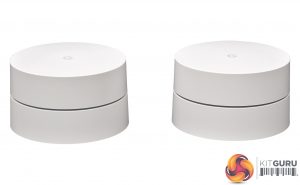

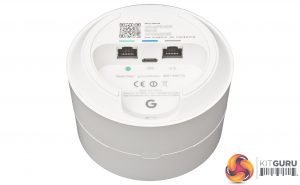

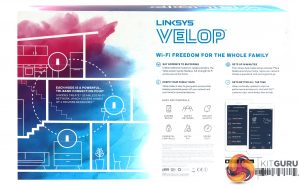
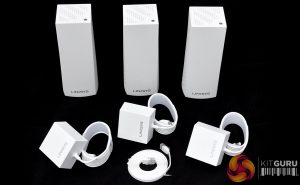
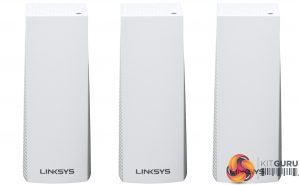


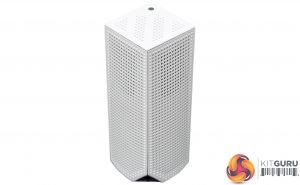
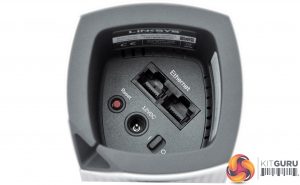
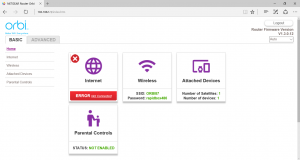
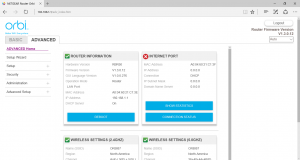
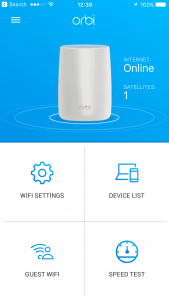
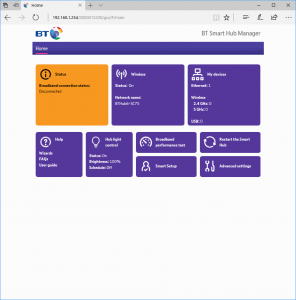
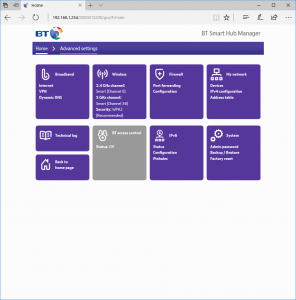



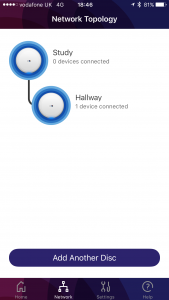












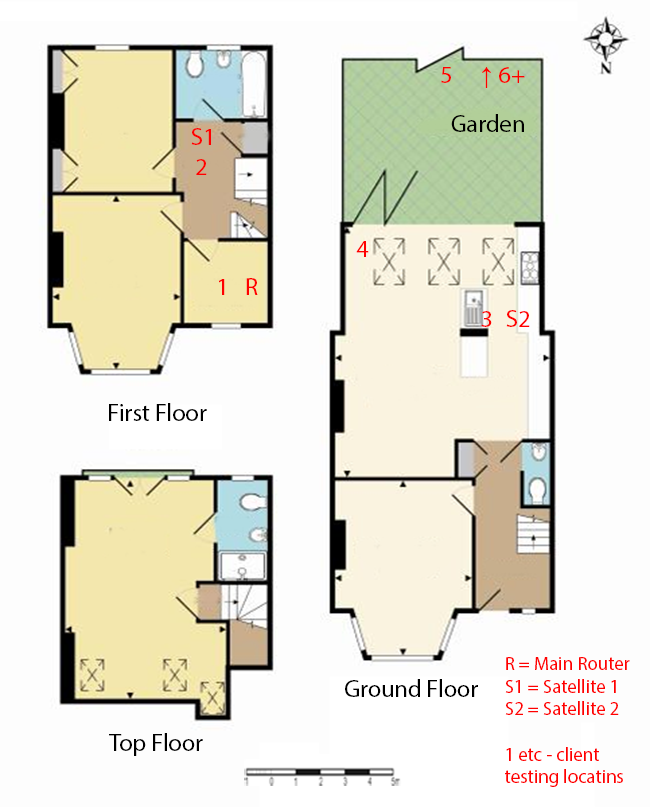
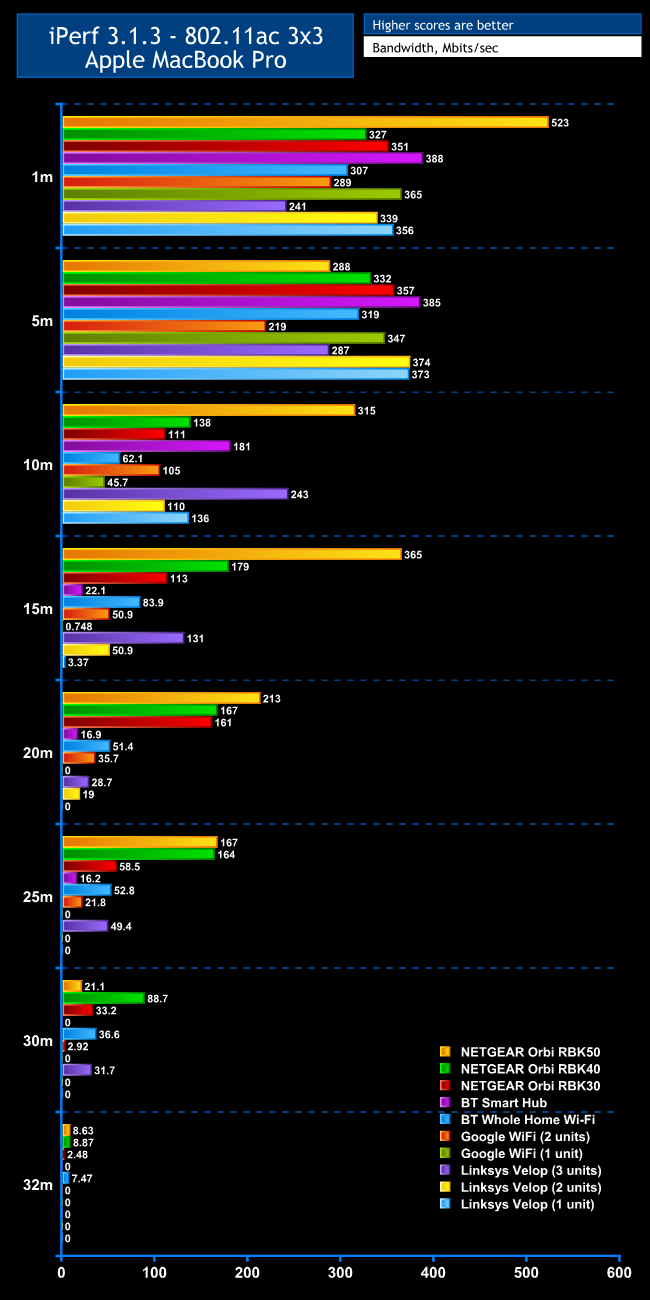
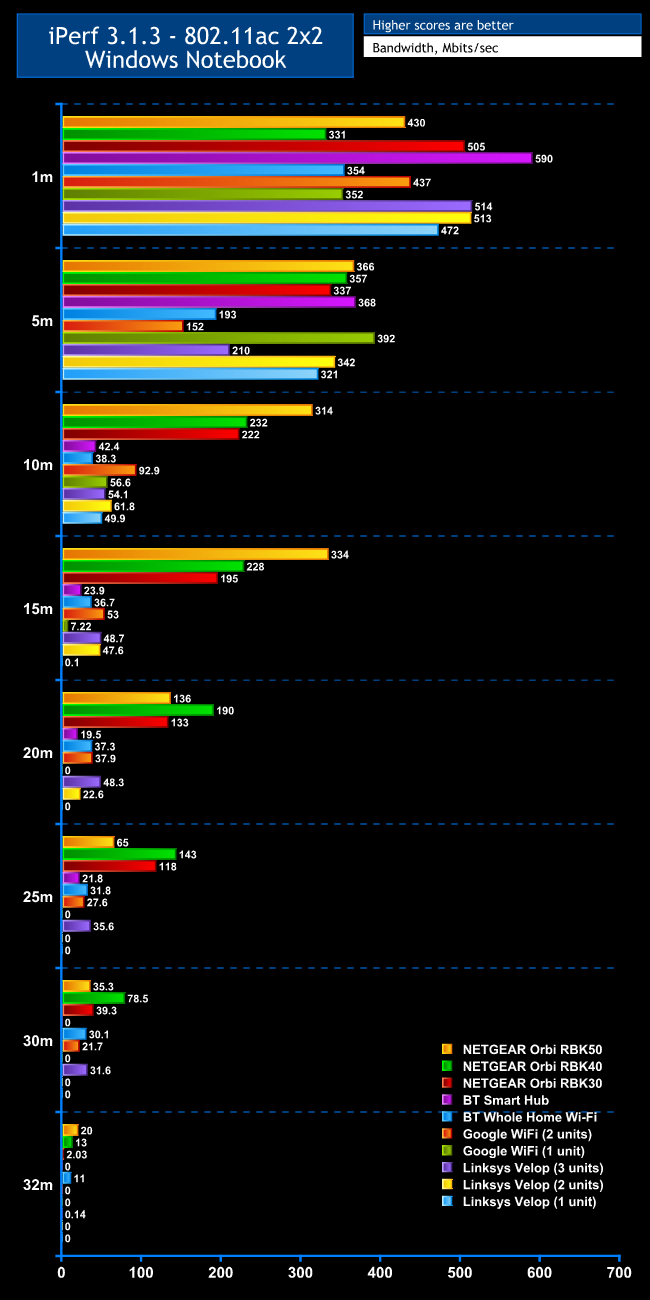




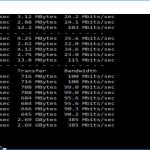



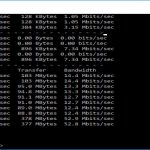


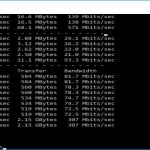
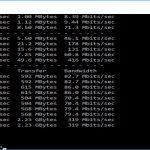

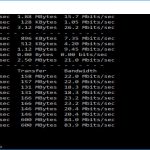




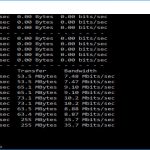
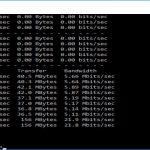


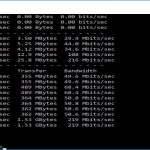

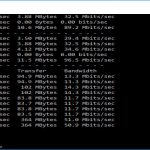



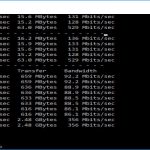



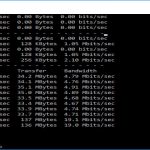

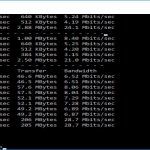



















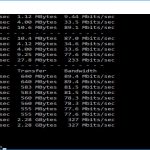



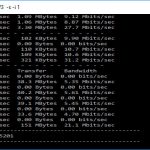

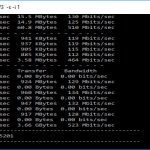





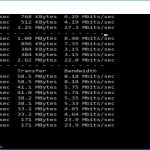





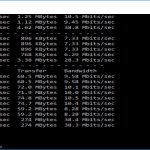








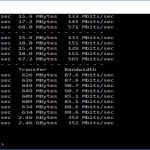






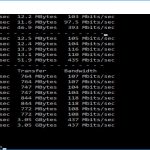
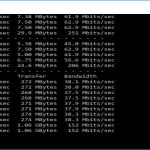





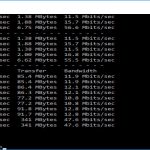






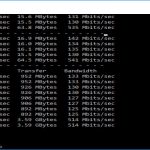







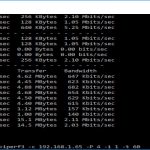
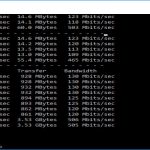
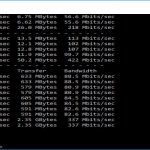

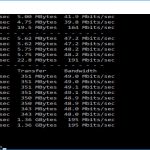









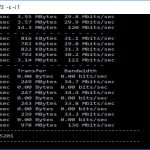



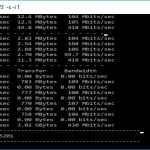
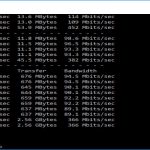



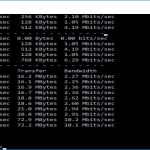





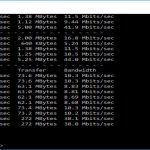





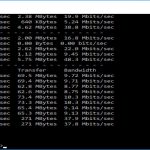
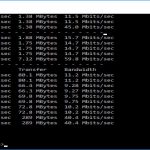

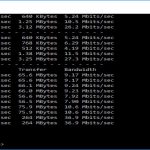

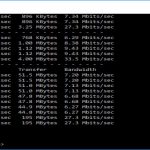





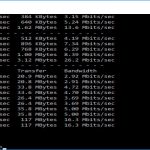






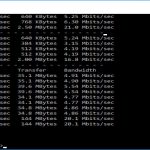






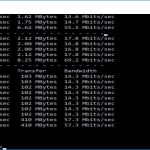
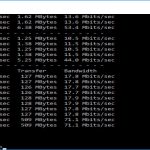

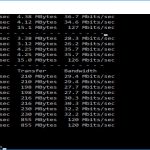







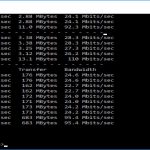

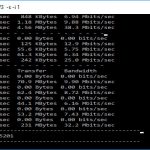






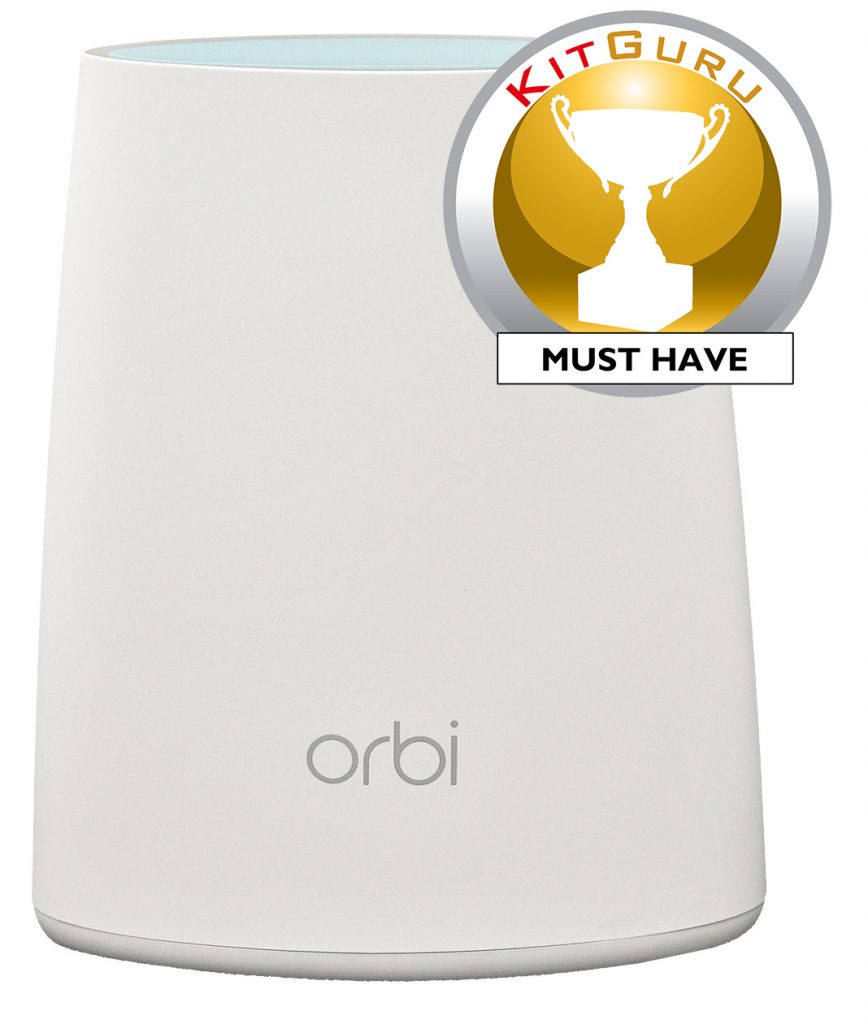

There are also the Ubiquit AmpliFi HD, eero (1st and 2nd generations), Amped ALLY, tp-link Deco M5, Asus Lyra, EnGenius EnMesh,… – we tested them all!
I have a netgear extender its the wkrst piece of carbage Netgear is one piece of junk and overpriced!
Would NOT touch the Orbi. Wired backhaul is NOT supported which is ridiculous. We purchased the Google WiFi 3 pack and love them. The app is slick and by far the best. You get wired backhaul.
No wonder Google WiFi is not only most popular mesh on Amazon but it’s actually most popular router of any type of router and well deserved.
No Eero?
Up195s
I guess I’m spoiled by City-Wide WiFi, buy Cable Internet and for 50+ miles (that’s as far as I’ve been, no reason it doesn’t work much further) you get walk-around WiFi where you’re always connected (unless you’re in between buildings, or in the countryside farmlands).
This seems expensive and designed for houses a tiny bit bigger than most large homes, and no advantage over 5 Gbps AC Networks.
For many km range, like video conferencing to the back 40, there’s Ubiquiti Networks airMax which goes as big as medium sized cities.
I can get 100′ off my old D-Link, much further away and I’m bumping into city-wide.
So much cheaper to put a high quality Router in the attic, and with 3-Band you can even get 7 Gbps (out, it’s not like your Phone or Laptop is likely to input at that speed).
I guess free WiFi has spoiled me and I’ve not studied this enough. Why is this better than cheaper AC Repeaters or an ‘octopus antenna’ Router – all the satellites add up to several hundred for a large separated family?